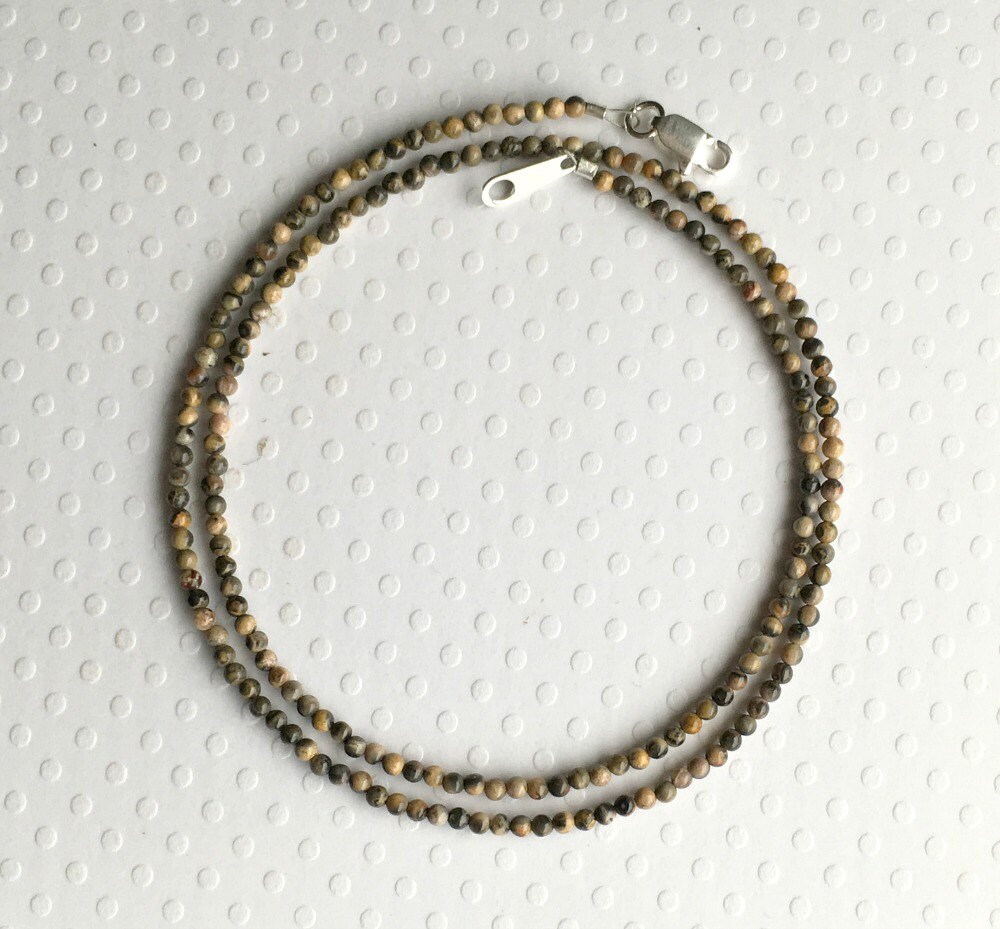
It will usually have a matte to subvitreous luster.
LEOPARD SKIN JASPER NECKLACE SKIN
Leopard skin does not produce an extremely bright luster. An extra day or two in the polishing step might produce a slightly better finish. We always run leopard skin in TXP polish for about 7 to 9 days. This assures that the stones will be tumbled gently.ģ) Leopard Skin Does Not Polish to a Super-bright Luster When loading the barrel for medium and fine grit, we add the rocks first, then add enough ceramic media (mixed sizes) to get the barrel up to about 1/2 to 2/3 full. The coarse grit step will reduce the stones in size. If you don't use media, you will still get nice tumbled stones. In the coarse grit step, we use about 90% rock and about 10% ceramic media (mixed sizes) to help the stones tumble better. We use four tablespoons of grit per pound of rock+media and add enough water to just cover the stones. Seven days in medium grit and seven days in fine grit will be long enough. Don't tumble longer or your stones will be reduced in size. Even in a small tumbler barrel such as the Thumler's A-R1, A-R2, or MP-1, seven days is usually enough to produce nicely rounded stones.

We tumble it seven days in coarse grit (four tablespoons per pound of rock+media) and enough water to cover the stones. The minerals that make up Leopard Skin have a Mohs Hardness between 5 and 7. When tumbling leopard skin, these things should be considered: We think the rhyolite was modified by hydrothermal metamorphism - and during that process, hot waters dissolved original minerals, deposited new minerals, and the end result is the leopard-patterned appearance that we see today. We believe that leopard skin was once a rhyolite. What is this stuff? It is a rock composed of many different minerals. "Leopard Skin Stone" or simply "Leopard Skin" is more appropriate. In fact, it may reduce the quality of the polish because the surfaces of the stones suffer from the extra impacts of longer tumbling.Īlthough lots of people call this material "Leopard Skin Jasper", that name is incorrect. Tumbling it in the polishing step for twice as much time will not significantly improve the luster.

It does not produce a bright vitreous luster like jasper or agate. When polished, leopard skin usually produces a soft glow to a matte finish. There are many features in these stones that will surprise you. If you are a curious person, get a magnifying device to get a much closer look at your stones. Most of the leopard skin that you receive will have these color patterns: 1) reds, blacks, grays, and whites on a pinkish background and, 2) golds, tans, browns, blacks, and grays on a tan to cream background. Leopard skin has round spots, ovoid spots, concentric spots, radial spots and much more. But the most interesting features are the spots - and the spots are why this material is called "leopard skin". It produces tumbled stones marked with spots, bands, and swirls of color. If you like tumbled stones with a colorful and interesting appearance, then you'll probably enjoy "leopard skin" tumbling rough.


 0 kommentar(er)
0 kommentar(er)
